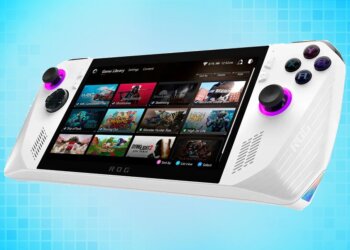On Nintendo’s specifications page, the CPU and GPU for the Nintendo Switch 2 are simply labeled as a “Custom processor made by NVIDIA.” However, during a developer roundtable, we got some exclusive insights into what the Switch 2 will be packing under the hood and how it will empower game developers.
Producer Kouichi Kawamoto, technical director Tetsuya Sasaki, and director Takuhiro Dohta sat down with the press to answer questions about the new Switch. All interactions were facilitated by interpreter Raymond Elliget.
“Nintendo doesn’t usually divulge much about hardware specs,” Sasaki mentioned. “Our main focus is always on the value we offer our customers.” Yet, the team did provide some interesting tidbits about what’s in store.
We gained a glimpse into the tech Nintendo is relying on, along with some hardware specifics you won’t find on paper. Here’s what we discovered:
### DLSS and Hardware Ray Tracing Make the Cut
By collaborating with Nvidia, Nintendo gains access to its powerful DLSS technologies. Dohta confirmed that DLSS upscaling is indeed being utilized and made available to developers, responding to a query from Inverse’s Shannon Liao.
“When discussing hardware capabilities, games can be output to a TV at a maximum of 4K. Whether developers aim for native resolution or opt for upscaling is their choice,” he explained. “This flexibility presents software developers with numerous possibilities.”
Regarding hardware ray tracing, Dohta confirmed that the chip supports it, offering yet another tool for developers to implement at their discretion.
### Battery Life and System Processing
According to Nintendo’s official specs, the Switch 2’s 5220 mAh battery offers an estimated 2 to 6.5 hours of playtime per charge, depending on various factors. The developers were hesitant to provide a more precise duration. Sasaki noted that battery life could vary greatly based on the game and conditions.
Dohta further explained that new features like GameChat add complexity, making the variability in battery life broader than the original Switch. This makes direct comparisons between the two systems tricky.
### Emulation of Original Switch Software
When asked about backward compatibility for Switch games and GameCube classics, the developers stated that these games are emulated—similar to Xbox’s backward compatibility approach.
“It’s a nuanced topic, but we leverage software emulation alongside hardware,” Sasaki explained.
### Upgraded Bluetooth Functionality
The Joy-Cons of the Switch 2 now use Bluetooth 3.0. Responding to concerns about the original Switch’s difficulties with multiple Bluetooth devices, including controllers and headsets, Sasaki kept it straightforward: “Yes, it has improved.”
He added that a bigger system size and enhanced antennas contribute to better connections. They’ve also increased the number of antennas and made numerous adjustments.
### Choosing LCD Over OLED
The Switch 2 features a 7.9-inch LCD display that supports HDR. Although the original Switch’s premium version came with an OLED screen, some might see this as a downgrade. Sasaki mentioned that LCD technology has advanced considerably since the development phase.
Kawamoto added that while the original OLED Switch didn’t support HDR, this new LCD screen does.
### Understanding the Two USB Type-C Ports
When questioned by CNET’s Scott Stein about whether the top USB-C port on the Switch 2 could be used for external displays like Xreal glasses, Kawamoto clarified that only the bottom port supports video out.
“As for compatibility with the glasses, since it’s not an official Nintendo product, it’s hard to provide a definite answer,” Kawamoto said.
The top USB-C port has been demonstrated with the new Nintendo Switch 2 camera and can also be used for charging in tabletop mode.










![[PS5] Review of ELDRADOR CREATURES Shadowfall](https://www.pixbulletin.com/wp-content/uploads/2025/03/PS5-Review-of-ELDRADOR-CREATURES-Shadowfall.avif.avif)






























